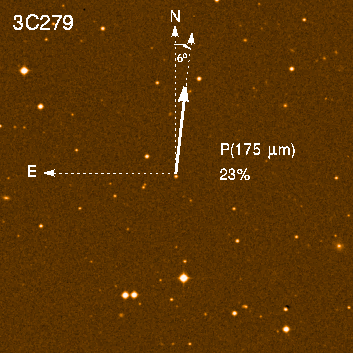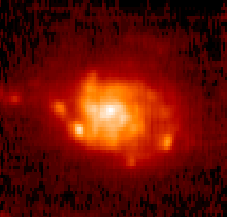Considerable progress has been made in better understanding of the instrumental effects which influence calibration in flight. The major sources of uncertainties are drift effects of the detectors after illumination change, more difficult to correct for than expected preflight, and use of incomplete calibration curves of the internal calibrators (FCS), in particular at the faint end. Automatic drift corrections based on an analytical description of transients for the Si:Ga sensors are being tested and compared with the application of an empirical model. The FCS calibration is being continuously improved, but given the large number of operational modes and the wide range of fluxes, it will take a couple of months to have accurate tables available for all wavelengths and modes. As an intermediate step selected modes for higher photometric accuracy may be recommended. The sensitivity limits given in the last Addendum to the Observer's Handbook have now been confirmed by several independent observers of faint objects. In general, and as experienced by other instruments, the noise increase due to cosmic ray particles (spikes and responsivity changes) is a factor 3 for the Ge:Ga sensors. The silicon detectors and the stressed Ge:Ga camera C200 are less affected.
At the longest wavelengths offered by ISO,
cirrus confusion limits ISOPHOT in many regions of the sky. Figure 1 shows a
region in Cepheus with cirrus at 90 ![]() m as measured with C100, in
comparison with the IRAS 100
m as measured with C100, in
comparison with the IRAS 100 ![]() m map. The corresponding 175
m map. The corresponding 175 ![]() m map
as performed with C200 shows similar bright structures. Detection of sources
< 100 mJy at 200
m map
as performed with C200 shows similar bright structures. Detection of sources
< 100 mJy at 200 ![]() m in these regions will be difficult and requires small
often oversampled maps of the environment. On the other hand, in the (rare)
cirrus-free regions sources of 20 mJy (1 sigma, 256 s) may be detected. The
ISOPHOT teams will soon release information on cirrus confusion based on
some more fields. While the sky looks very patchy in the FIR even at the now
available arcmin scale, the first large zodiacal light maps made by ISOPHOT
at 25
m in these regions will be difficult and requires small
often oversampled maps of the environment. On the other hand, in the (rare)
cirrus-free regions sources of 20 mJy (1 sigma, 256 s) may be detected. The
ISOPHOT teams will soon release information on cirrus confusion based on
some more fields. While the sky looks very patchy in the FIR even at the now
available arcmin scale, the first large zodiacal light maps made by ISOPHOT
at 25 ![]() m show a very smooth bright foreground produced by the
interplanetary dust emission.
m show a very smooth bright foreground produced by the
interplanetary dust emission.
 The absolute photometry AOTs P05 and P25, now allowing correction for dark
current and straylight, have been successfully tested and will soon be
publicly available. Instrumental polarization has been determined and first
polarization measurements on a quasar have been performed with AOT P51. A
figure on the cover shows the quasar 3C279 on an optical Palomar plate with
the first polarization measurements at a wavelength of 175
The absolute photometry AOTs P05 and P25, now allowing correction for dark
current and straylight, have been successfully tested and will soon be
publicly available. Instrumental polarization has been determined and first
polarization measurements on a quasar have been performed with AOT P51. A
figure on the cover shows the quasar 3C279 on an optical Palomar plate with
the first polarization measurements at a wavelength of 175 ![]() m overlaid.
m overlaid.
A polarization degree of 23% and a polarization angle of -6 degrees off the north were measured. The data is from the GT program of P. Barr et al., and was reduced by R. Laureijs and U. Klaas of the PIDT.

Fig. 1: Cirrus clouds in Cepheus seen at 90 ![]() m with ISOPHOT (top) and 100
m with ISOPHOT (top) and 100
![]() m with IRAS (bottom). The higher spatial resolution of ISO allows the
study of cirrus structures to higher spatial frequencies. The corresponding
175
m with IRAS (bottom). The higher spatial resolution of ISO allows the
study of cirrus structures to higher spatial frequencies. The corresponding
175 ![]() m map (not shown) enables the colour temperature of these
structures to be derived. The detection of faint sources in these regions is
hampered and requires small maps of the environment.
m map (not shown) enables the colour temperature of these
structures to be derived. The detection of faint sources in these regions is
hampered and requires small maps of the environment.
Straylight measurements with PHT-S on Gamma Draconis have been completed and exact beam profiles determined, which also allow a more accurate transfer of calibrations based on point-like sources towards surface brightness measurements. The full straylight verification programme is being performed step by step; soon Saturn will be used to determine the C200 straylight profiles.
The ISOPHOT Data Centre at MPIA Heidelberg has hosted more than 30 visitors up to now. All have received help in data reduction, removal of instrumental effects, better flat-fielding and improving calibration. The feedback from outside observers is highly valuable to the ISOPHOT teams responsible for the operation and upgrades of tools. Any observer who wishes to make more out of his/her data soon is invited for a visit.
In a recent consortium meeting impressive results from the early mission on
large samples of selected galaxies, spectra of cirrus and supernova remnants
and maps of interstellar clouds and galaxies (fig. 2) were shown. ISOPHOT is
used in several deep surveys in the far IR. The Serendipity Survey using the
C200 camera at 175 ![]() m is now becoming an independent project. More than
50,000 degree long strip maps have been accumulated and more than 1000
point-like source candidates extracted. The CISS consortium will release
preliminary data from this survey soon after its January meeting.
m is now becoming an independent project. More than
50,000 degree long strip maps have been accumulated and more than 1000
point-like source candidates extracted. The CISS consortium will release
preliminary data from this survey soon after its January meeting.



Fig. 2: The spiral galaxy M101 at a distance of 7 Mpc as mapped with
the ISOPHOT AOT P32 at 100 ![]() m (top), and for comparison an optical image
(left) and the IRAS map from the Catalogue of Bright Galaxies (bottom). The
ISOPHOT map shows details of the spiral structure and the brighter HII regions.
Note that the ISOPHOT map is rotated by seven degrees relative to the
other two.
m (top), and for comparison an optical image
(left) and the IRAS map from the Catalogue of Bright Galaxies (bottom). The
ISOPHOT map shows details of the spiral structure and the brighter HII regions.
Note that the ISOPHOT map is rotated by seven degrees relative to the
other two.